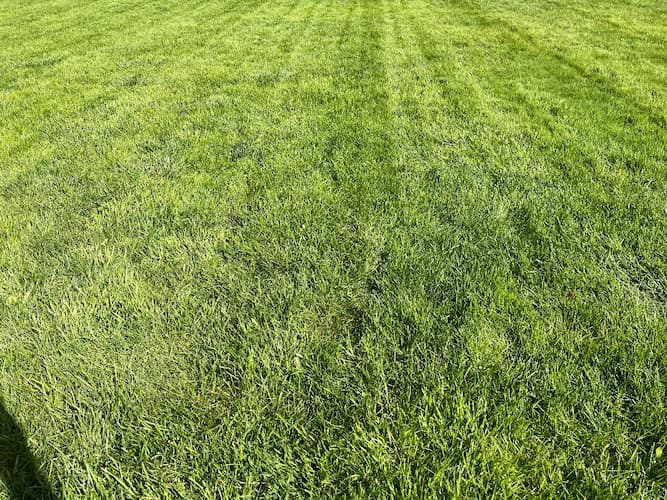How to Start a New Lawn

About Planting New Lawns
Planting and establishing a new lawn is a simple task. Creating a lush, healthy lawn, largely free of weeds and submerged rocks is a sizable endeavor. The result is well worth the effort. The effort is not one of complexity. It is a function of time and effort. The result is a lawn that looks like a million bucks and is easier to maintain. Remember, it is easy to keep a good lawn in shape than it is to put a poor lawn back in shape.
Here is what you need to create that great lawn:
Soil Preparation
Creating a great lawn begins with a soil test. Your local County Extension Service (CES) can do this test for you for a small fee. Find your local CES now.
While awaiting the results of your soil test, prepare your soil by raking and leveling it. You should grade it away from your house, shed, and other objects. During raking and leveling, be diligent in removing stones, rocks, and other objects. Look for, and remove rocks and debris below the surface, ideally to a depth of six inches. This is a “pay me now or pay me later” chore. Grassroots will not be able to grow and nourish the grass if a rock is just below the surface.
Upon receiving the results of your soil test, follow the recommendations from the test. If your soil’s pH is acidic, the pH needs to be raised. Add powdered or pelletized limestone, commonly called lime. If the test shows your soil to be too high pH (Alkaline), it needs to be lowered. Apply powdered sulfur.
Spread the fertilizer in the area to be seeded. Look for a fertilizer that is high in Nitrogen, to fuel new seedling growth. Lawn and garden stores carry blends specific to new lawns.
Grass Seed Selection and Application
Selecting the right grass seed is important. Different types of seeds are suited for sun, shade, or heavy use areas. There are also different types of seeds for hot versus cool climates. Selecting the Right Seeds.
For most uses, we recommend a blend of seeds. This helps to overcome the effect of changing weather, type of use, and guards somewhat against disease.
Read the directions on the seed package and your spreader. We recommend you cut the application rate in half and go across your lawn twice, once north-south and then east-west. A criss-cross pattern helps assure a more consistent application rate, and that you did not miss an area.
Some people spread a layer of straw over the lawn. This helps keep the seed moist and the hot sun off the seed, encouraging germination. Straw is frequently used in warmer weather. And remember, remember, you have to rake it up later.
Seeding new lawns in the spring or fall is preferred. But you can seed your lawn in the summer if you have the time to give it frequent watering. The trick is to keep the seed moist, not wet.
After the lawn has come in, reseed bare and sparse sections. The grass will quickly spread and thicken to fill the thin areas of the new lawn. Overseeding sparse areas will help to fill in those areas quicker.
Wherever you see a bare spot, dig down and see if a rock is there. If so, remove it, and refill the hole. Then, reseed the spot.
Keep off the lawn as it begins to germinate and grow. That goes for the kids, the pets, and you.
Watering a New Lawn
Grass seed needs to be kept moist to germinate. Sitting on or near the surface of the soil, it can dry out quickly. There is no need to water deeply. But you do need to water frequently, once or twice a day in dry weather.
After the seed sprouts, its roots will be shallow at first, but grow deeper with time. Water a little deeper, but less often as the lawn grows. More on Water
The First Cutting of a New Lawn
The first mowing is a real, indescribable joy. Later mowings will not result in that same feeling of elation, so enjoy the feeling while it lasts.
However, don’t be in a rush to mow a new lawn. Give it time to get established. The thin, tender new grass blades can be easily damaged. Wait until it’s three or four inches tall before making the first cutting.
Related Articles
Please support our site. Shop for:
- rmmatthews100@hotmail.com
- 585-721-6528
- Rochester, NY
©1999-2024 GardenersNet.Com, All Rights Reserved

